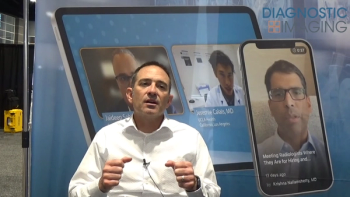
MRI Scans Reveal What Loneliness Looks Like
Brain regions that control memories and imagination are more tightly connected in people who get lonely.
It has been said that loneliness is just a state of mind. Now, research has proven that is a fact – whether someone feels lonely is dependent upon how their brain works.
In a study published in the Dec. 15
“We expected unmet desires for social interaction in humans (i.e., loneliness) to be associated with a unique neural signature, which implicates evolved higher-associative regions,” said the team led by Nathan Spreng, associate professor of neurology with McGill’s Montreal Neurological Institute-Hospital. “Gray matter volumes, intrinsic functional connectivity, and white matter tract integrity showed distinctive features in the ‘lonely brain.’”
For more coverage based on industry expert insights and research, subscribe to the Diagnostic Imaging e-Newsletter
Spreng’s team compared structural, functional, and diffusion MRI images from people who said they were lonely to those who said they were not. What they found is a more tightly connected default network – a collection of brain regions involved with reminiscing, future planning, imagination, and thinking of others – in individuals who report frequent loneliness. The scans also showed these people have larger grey matter in those brain regions.
In addition, Spreng said, lonely people had a better-preserved fornix, a bundle of nerve fibers that transmit signals from the hippocampus to the default network.
“In the absence of desired social experiences, lonely individuals may be biased towards internally-directed thoughts, such as reminiscing or imagining social experiences. We know these cognitive abilities are mediated by the default network brain regions,” he said. “So, this heightened focus on self-reflection, and possibly imagined social experiences, would naturally engage the memory-based functions of the default network.”
Overall, he said, lonely people are more likely to use their imaginations, memories of the past, and hopes for the future to overcome their feelings of isolation. The scans showed the anatomical features associated with loneliness were more pronounced in men than in women.
According to previous studies, Spreng said, older people who experience loneliness are at a higher risk of cognitive decline and dementia, and using MRI scans to better understand how loneliness presents in the brain could help providers in their efforts to prevent neurological disease and create better treatments.
Newsletter
Stay at the forefront of radiology with the Diagnostic Imaging newsletter, delivering the latest news, clinical insights, and imaging advancements for today’s radiologists.




























